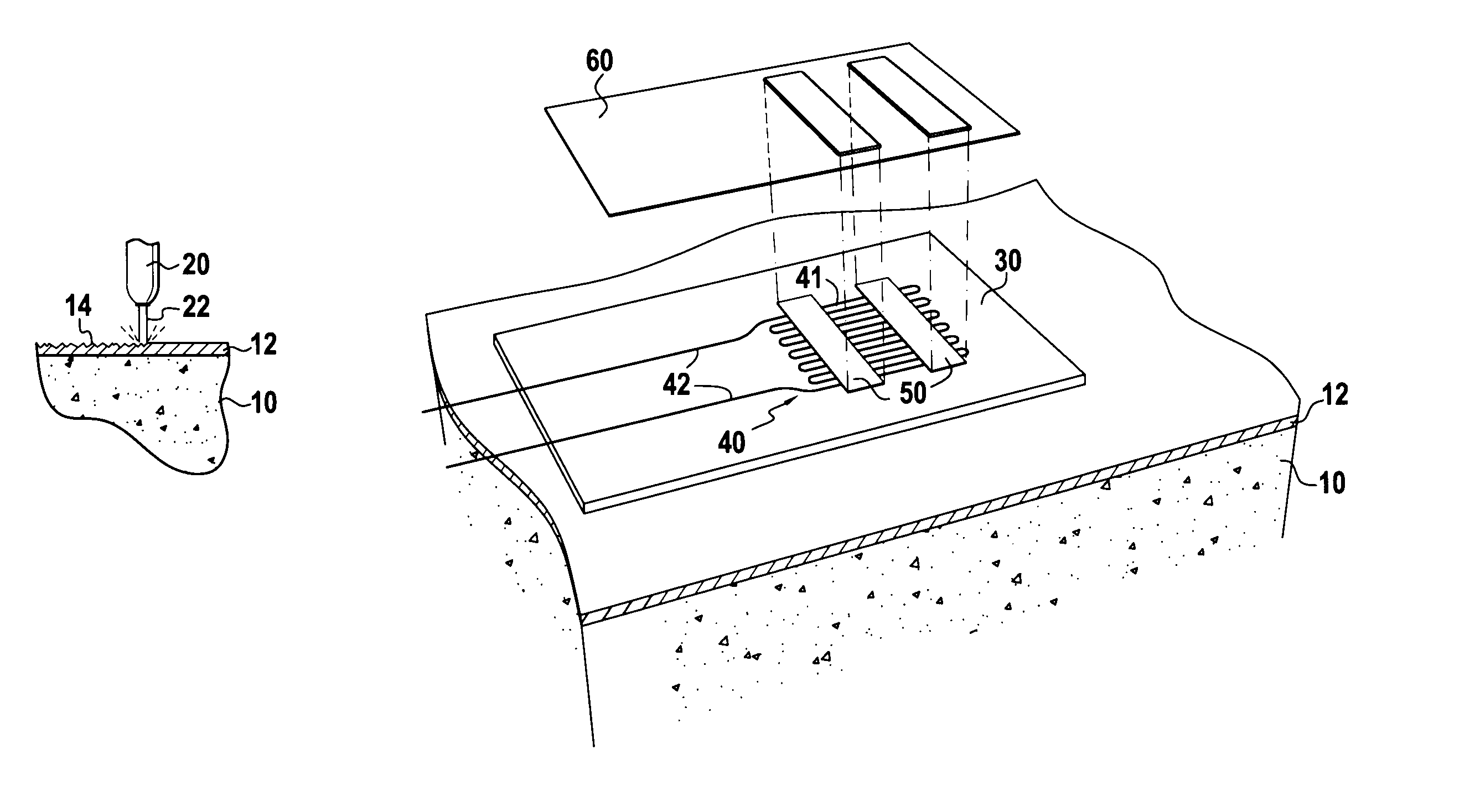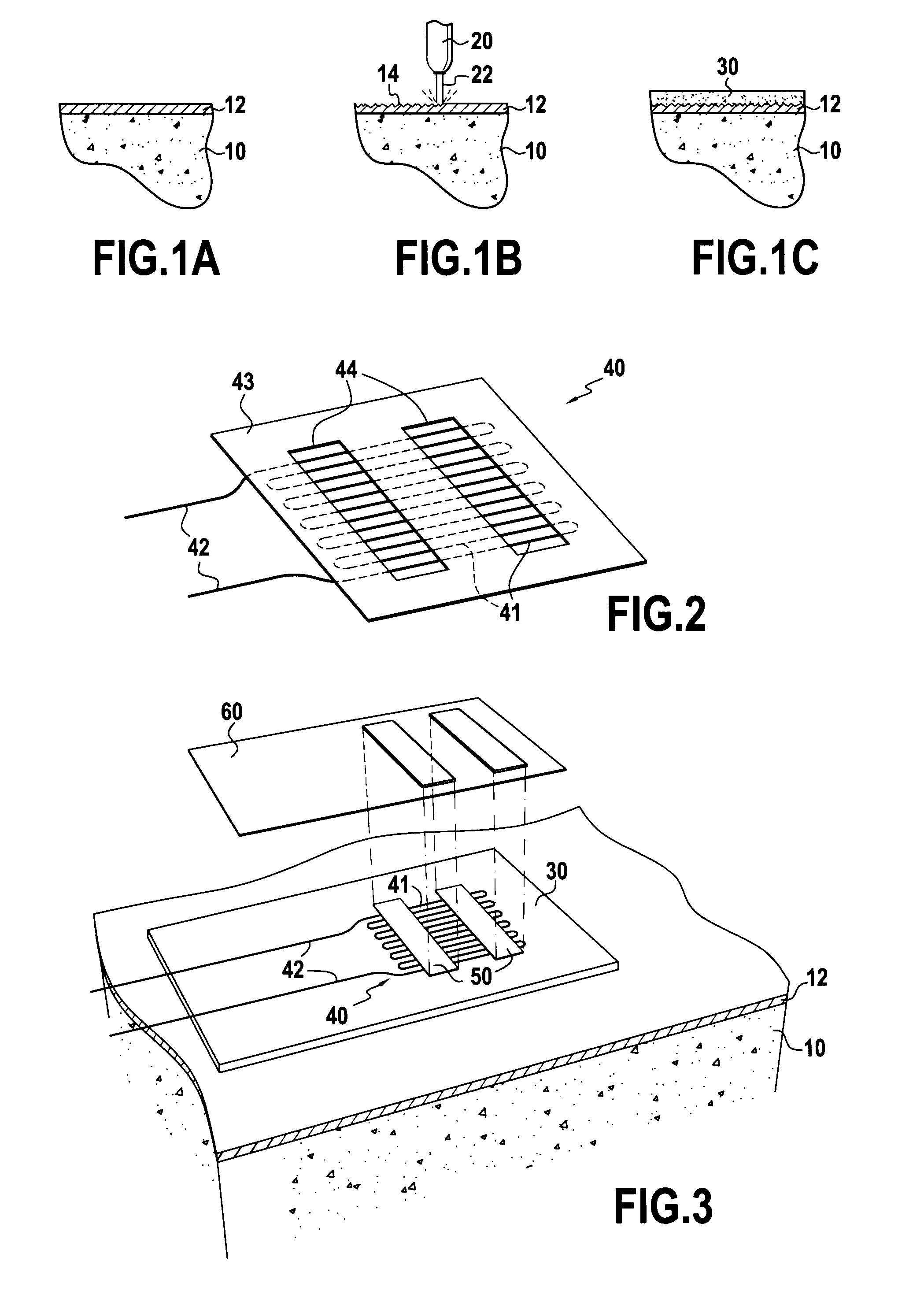Method of making a deposit on an SiC-covered substrate
a technology of sic and deposit, applied in the direction of mechanical means, electrical/magnetic measuring arrangements, machines/engines, etc., can solve the problems of failure mode rupture at the interface between, damage to the sic surface without creating favorable roughness, etc., to improve mechanical anchoring of the coating on the sic, improve physicochemical bonding, and increase the roughness of the surface
- Summary
- Abstract
- Description
- Claims
- Application Information
AI Technical Summary
Benefits of technology
Problems solved by technology
Method used
Image
Examples
Embodiment Construction
[0031]FIG. 1A shows a part for use in very high temperature applications, having a substrate 10 that is covered in a layer 12 of silicon carbide (SiC). By way of example, the substrate 10 is made of a ceramic matrix composite material, or of a self-healing ceramic matrix composite material. The composite material may be SiC or it may be formed by a plurality of refractory ceramic layers that are precursors of glass in the silicon boron carbon (Si—B—C) ternary system. Such composites are reinforced, for example, by fibers made of carbon or ceramic. In applications to aviation turbomachines, such parts are typically thin parts, of frustoconical or plane rectangular shape, and they present a size of the order of a few hundreds of millimeters.
[0032]The SiC layer 12 deposited on the substrate is deposited, for example, by the technique known as chemical vapor deposition.
[0033]FIG. 1B shows the same part, with a laser 20 emitting a laser beam towards the SiC layer 12. The laser beam impac...
PUM
| Property | Measurement | Unit |
|---|---|---|
| temperatures | aaaaa | aaaaa |
| impact frequency | aaaaa | aaaaa |
| size | aaaaa | aaaaa |
Abstract
Description
Claims
Application Information
 Login to view more
Login to view more - R&D Engineer
- R&D Manager
- IP Professional
- Industry Leading Data Capabilities
- Powerful AI technology
- Patent DNA Extraction
Browse by: Latest US Patents, China's latest patents, Technical Efficacy Thesaurus, Application Domain, Technology Topic.
© 2024 PatSnap. All rights reserved.Legal|Privacy policy|Modern Slavery Act Transparency Statement|Sitemap



